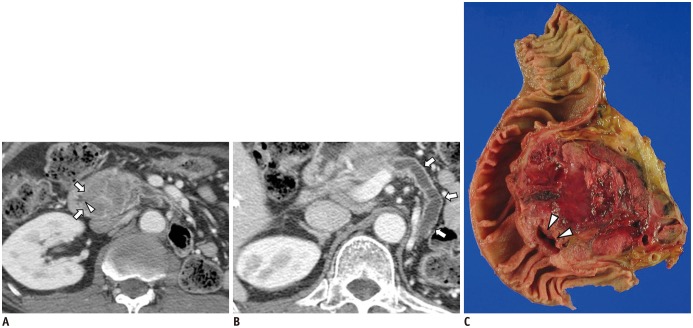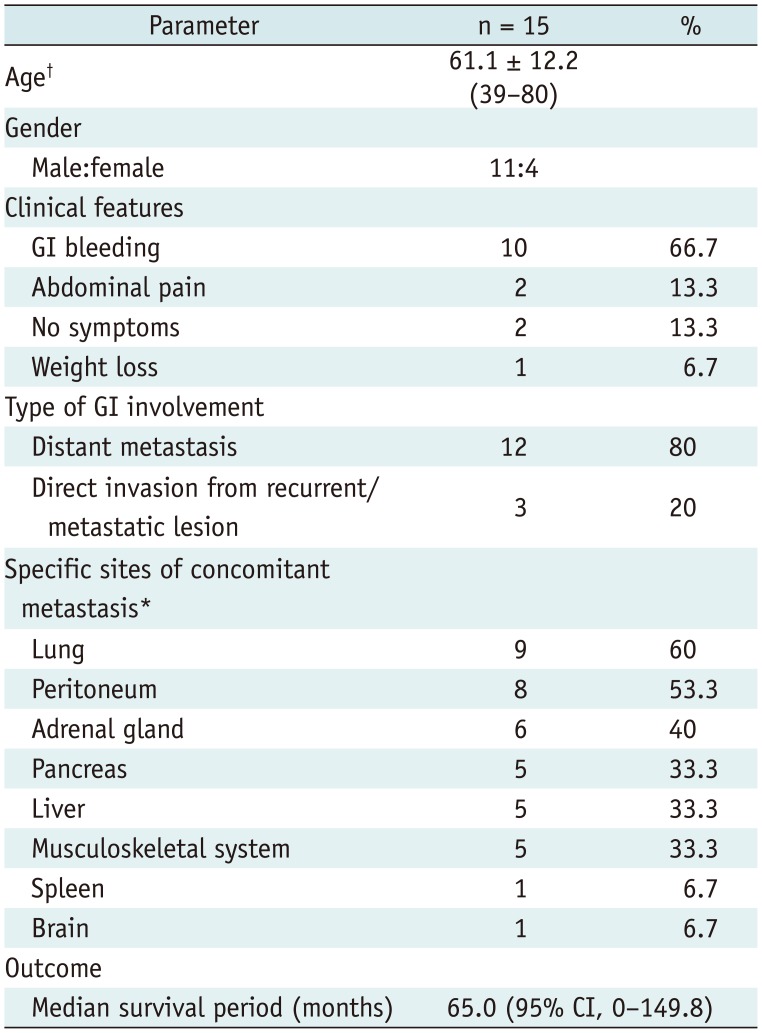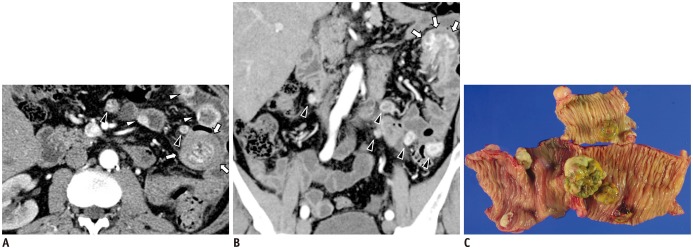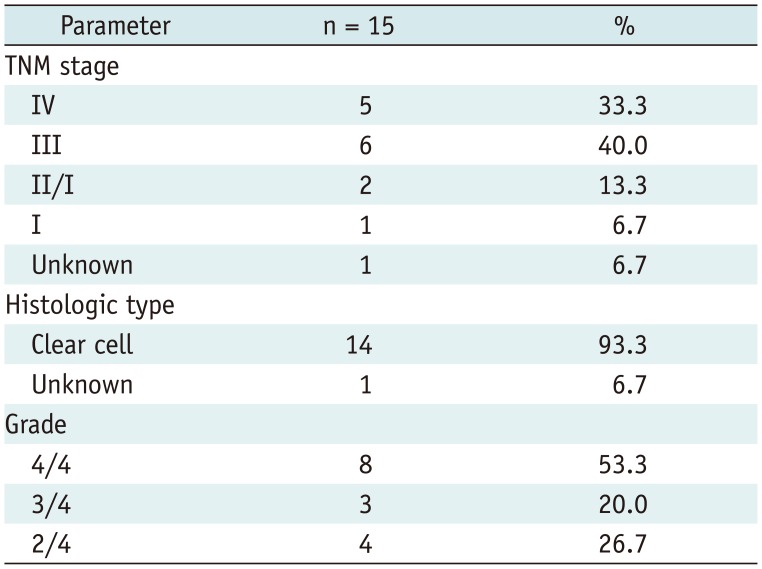1. Siegel R, Naishadham D, Jemal A. Cancer statistics, 2012. CA Cancer J Clin. 2012; 62:10–29. PMID:
22237781.

2. Janzen NK, Kim HL, Figlin RA, Belldegrun AS. Surveillance after radical or partial nephrectomy for localized renal cell carcinoma and management of recurrent disease. Urol Clin North Am. 2003; 30:843–852. PMID:
14680319.

3. Ljungberg B. The role of metastasectomy in renal cell carcinoma in the era of targeted therapy. Curr Urol Rep. 2013; 14:19–25. PMID:
23212738.

4. Karam JA, Wood CG. The role of surgery in advanced renal cell carcinoma: cytoreductive nephrectomy and metastasectomy. Hematol Oncol Clin North Am. 2011; 25:753–764. PMID:
21763966.

5. Russo P, O'Brien MF. Surgical intervention in patients with metastatic renal cancer: metastasectomy and cytoreductive nephrectomy. Urol Clin North Am. 2008; 35:679–686. viiiPMID:
18992621.

6. Motzer RJ, Hutson TE, Cella D, Reeves J, Hawkins R, Guo J, et al. Pazopanib versus sunitinib in metastatic renal-cell carcinoma. N Engl J Med. 2013; 369:722–731. PMID:
23964934.

7. Díaz-Candamio MJ, Pombo S, Pombo F. Colonic metastasis from renal cell carcinoma: helical-CT demonstration. Eur Radiol. 2000; 10:139–140. PMID:
10663731.

8. Featherstone JM, Bass P, Cumming J, Smart CJ. Solitary, late metastatic recurrence of renal cell carcinoma: two extraordinary cases. Int J Urol. 2006; 13:1525–1527. PMID:
17118029.

9. Woo S, Cho JY. Imaging findings of common benign renal tumors in the era of small renal masses: differential diagnosis from small renal cell carcinoma: current status and future perspectives. Korean J Radiol. 2015; 16:99–113. PMID:
25598678.

10. Deguchi R, Takagi A, Igarashi M, Shirai T, Shiba T, Watanabe S, et al. A case of ileocolic intussusception from renal cell carcinoma. Endoscopy. 2000; 32:658–660. PMID:
10935799.

11. Lee JG, Kim JS, Kim HJ, Kim ST, Yeon JE, Byun KS, et al. Simultaneous duodenal and colon masses as late presentation of metastatic renal cell carcinoma. Korean J Intern Med. 2002; 17:143–146. PMID:
12164092.

12. Mandal A, Littler Y, Libertiny G. Asymptomatic renal cell carcinoma with metastasis to the skin and duodenum: a case report and review of the literature. BMJ Case Rep. 2012; 2012:bcr0220125764.

13. Gorski RL, Jalil SA, Razick M, Jalil AA. An obscure cause of gastrointestinal bleeding: renal cell carcinoma metastasis to the small bowel. Int J Surg Case Rep. 2015; 15:130–132. PMID:
26348395.

14. Greenwald D, Aljahdli E, Nepomnayshy D, Gallagher L, Sterling M. Synchronous gastric metastasis of renal cell carcinoma with absence of gastrointestinal symptoms. ACG Case Rep J. 2014; 1:196–198. PMID:
26157874.

15. Kim MY, Jung HY, Choi KD, Song HJ, Lee JH, Kim DH, et al. Solitary synchronous metastatic gastric cancer arising from t1b renal cell carcinoma: a case report and systematic review. Gut Liver. 2012; 6:388–394. PMID:
22844570.

16. Takeda T, Shibuya T, Osada T, Izumi H, Mitomi H, Nomura O, et al. Metastatic renal cell carcinoma diagnosed by capsule endoscopy and double balloon endoscopy. Med Sci Monit. 2011; 17:CS15–CS17. PMID:
21278696.

17. Zhao H, Han K, Li J, Liang P, Zuo G, Zhang Y, et al. A case of wedge resection of duodenum for massive gastrointestinal bleeding due to duodenal metastasis by renal cell carcinoma. World J Surg Oncol. 2012; 10:199. PMID:
23009644.

18. Vo E, Palacio CH, Omino R, Link RE, Sada Y, Avo A. Solitary colon metastasis from renal cell carcinoma nine years after nephrectomy: a case report. Int J Surg Case Rep. 2016; 27:55–58. PMID:
27543725.

19. Bhatia A, Das A, Kumar Y, Kochhar R. Renal cell carcinoma metastasizing to duodenum: a rare occurrence. Diagn Pathol. 2006; 1:29. PMID:
16972996.
20. Maeda T, Kozakai N, Nishiyama T, Ishii T, Sugiura H, Nakamura K. [Gastric metastasis from renal cell carcinoma 20 months after radical nephrectomy: a case report]. Hinyokika Kiyo. 2009; 55:137–140. PMID:
19378824.
21. Picchio M, Paioletti A, Santini E, Iacoponi S, Cordahi M. Gastric metastasis from renal cell carcinoma fourteen years after radical nephrectomy. Acta Chir Belg. 2000; 100:228–230. PMID:
11143327.

22. Eisenhauer EA, Therasse P, Bogaerts J, Schwartz LH, Sargent D, Ford R, et al. New response evaluation criteria in solid tumours: revised RECIST guideline (version 1.1). Eur J Cancer. 2009; 45:228–247. PMID:
19097774.

23. Saitoh H. Distant metastasis of renal adenocarcinoma. Cancer. 1981; 48:1487–1491. PMID:
7272969.

24. Brufau BP, Cerqueda CS, Villalba LB, Izquierdo RS, González BM, Molina CN. Metastatic renal cell carcinoma: radiologic findings and assessment of response to targeted antiangiogenic therapy by using multidetector CT. Radiographics. 2013; 33:1691–1716. PMID:
24108558.

25. Debois JM. TxNxM1: the anatomy and clinics of metastatic cancer. Boston: Kluwer Academic Publishers;2012.
26. Sheth S, Scatarige JC, Horton KM, Corl FM, Fishman EK. Current concepts in the diagnosis and management of renal cell carcinoma: role of multidetector ct and three-dimensional CT. Radiographics. 2001; 21:S237–S254. PMID:
11598260.

27. Wallach JB, McGarry T, Torres J. Lymphangitic metastasis of recurrent renal cell carcinoma to the contralateral lung causing lymphangitic carcinomatosis and respiratory symptoms. Curr Oncol. 2011; 18:e35–e37. PMID:
21331270.

28. Pasha SF, Hara AK, Leighton JA. Diagnostic evaluation and management of obscure gastrointestinal bleeding: a changing paradigm. Gastroenterol Hepatol (N Y). 2009; 5:839–885. PMID:
20567529.
29. Ise N, Kotanagi H, Morii M, Yasui O, Ito M, Koyama K, et al. Small bowel perforation caused by metastasis from an extra-abdominal malignancy: report of three cases. Surg Today. 2001; 31:358–362. PMID:
11321350.

30. Kim SY, Ha HK, Park SW, Kang J, Kim KW, Lee SS, et al. Gastrointestinal metastasis from primary lung cancer: CT findings and clinicopathologic features. AJR Am J Roentgenol. 2009; 193:W197–W201. PMID:
19696259.

31. Gore RM, Levine MS. Textbook of gastrointestinal radiology. 3rd ed. Philadelphia: Saunders;2008.
32. Byun JH, Ha HK, Kim AY, Kim TK, Ko EY, Lee JK, et al. CT findings in peripheral T-cell lymphoma involving the gastrointestinal tract. Radiology. 2003; 227:59–67. PMID:
12601189.

33. Scherübl H, Jensen RT, Cadiot G, Stölzel U, Klöppel G. Neuroendocrine tumors of the small bowels are on the rise: early aspects and management. World J Gastrointest Endosc. 2010; 2:325–334. PMID:
21160582.

34. Kim SY, Kim KW, Kim AY, Ha HK, Kim JS, Park SH, et al. Bloodborne metastatic tumors to the gastrointestinal tract: CT findings with clinicopathologic correlation. AJR Am J Roentgenol. 2006; 186:1618–1626. PMID:
16714651.











 PDF
PDF ePub
ePub Citation
Citation Print
Print



 XML Download
XML Download